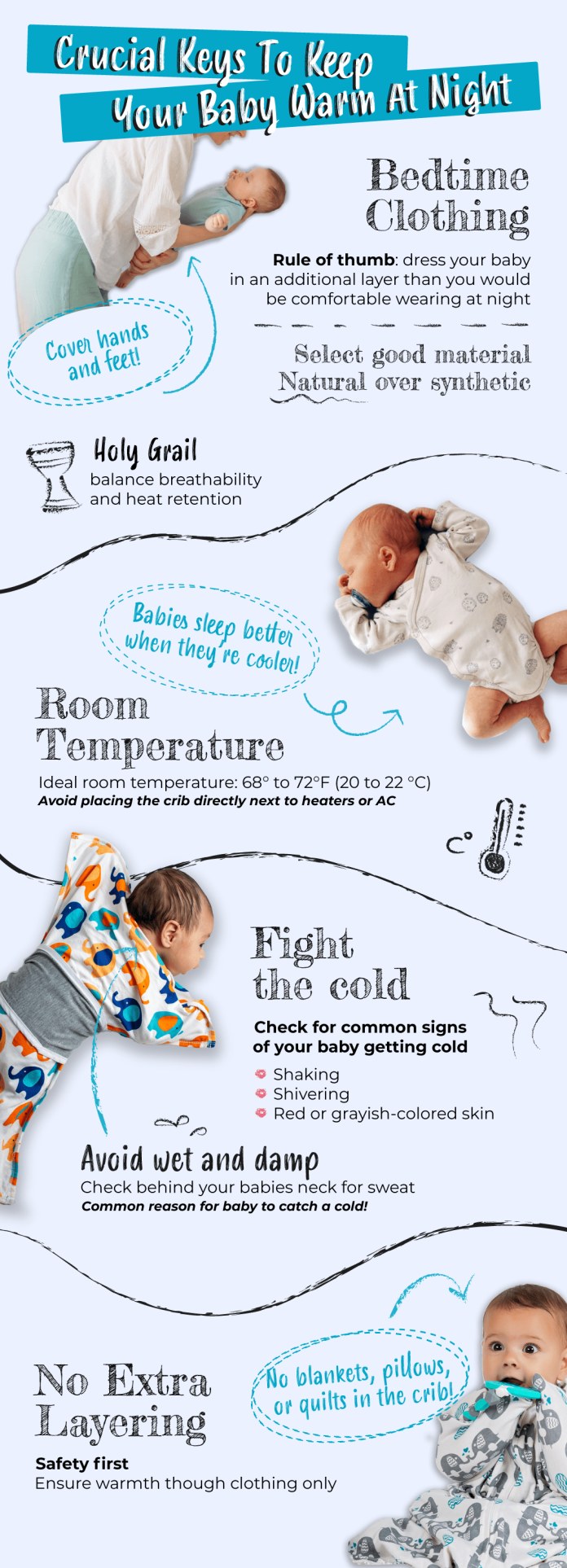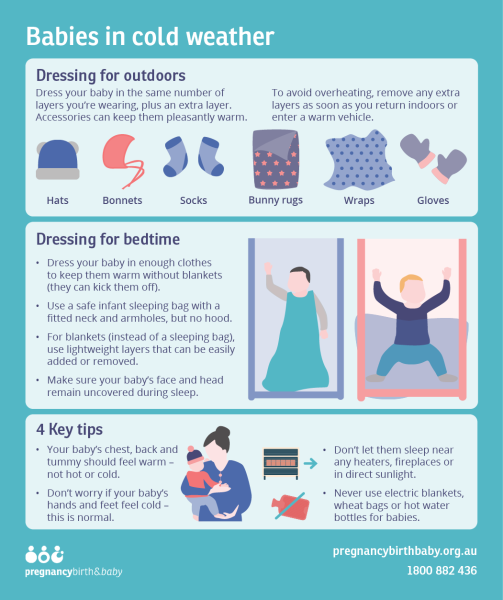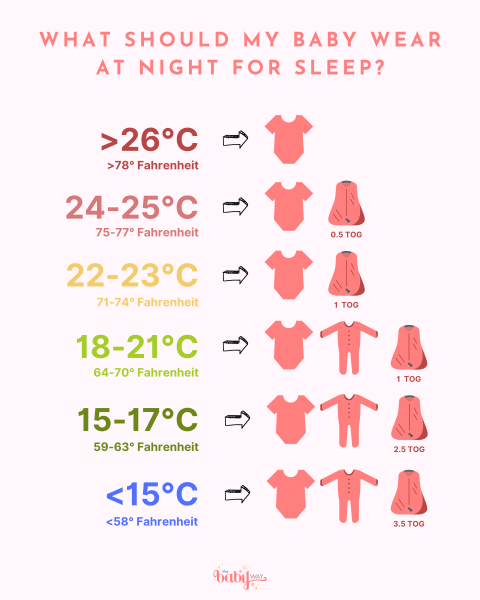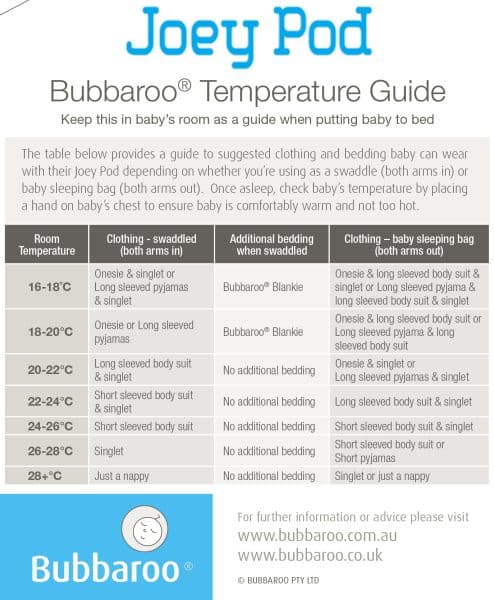Curled up in their crib, our precious little ones are vulnerable to the whims of the night, especially when it comes to temperature. As parents, we often find ourselves asking the age-old question, “How do I know if my baby is cold at night?” The well-being of our babies is our utmost priority, and understanding the signs of discomfort or chills can help us ensure they sleep soundly and comfortably through the night. In this article, we will explore the telltale signs that indicate if our babies are feeling chilly, providing helpful tips and guidance for a restful night’s sleep.
This image is property of media.healthdirect.org.au.
Review contents
Signs that your baby is cold
As parents, we always want to ensure that our little ones are comfortable and safe, especially during their sleep. One common concern is whether our baby is feeling too cold during the night. While it’s natural for babies to feel slightly cooler than adults, it’s still important to pay attention to their body temperature. Here are some signs that your baby may be feeling chilly:
Cold hands and feet
One of the first indicators that your baby may be cold is if their hands and feet feel cold to the touch. Since babies have a higher surface-area-to-body-mass ratio, their extremities tend to lose heat more easily. So, if you notice that your baby’s hands and feet feel cooler than usual, it may be a sign that they need an extra layer of warmth.
Shivering or trembling
Babies, like adults, shiver when they are feeling cold. If you notice your little one shaking or trembling, it could be an indication that they are not warm enough. Shivering is the body’s natural response to generate heat and increase their core temperature. So, if you see your baby shivering, it’s definitely a sign that they might need some extra warmth.
Pale or bluish skin
A baby’s skin can be a great indicator of their body temperature. If you notice that your baby’s skin appears pale or bluish, it’s likely that they are feeling cold. When the body’s temperature drops, blood vessels constrict, reducing blood flow to the skin. This can result in a pale or bluish appearance. If you observe this in your baby, it’s important to take steps to warm them up.
Monitoring your baby’s body temperature
Keeping an eye on your baby’s body temperature is crucial to ensuring their comfort and safety. While it’s normal for a baby’s hands and feet to feel slightly cool, their core body temperature should remain warm and stable. Here are a few ways you can monitor your baby’s body temperature:
Feeling their torso and back
One of the easiest ways to check your baby’s body temperature is by feeling their torso and back. Gently touch their chest, back, and tummy to ensure they are warm and not overheating or too cold. These areas give a good indication of their overall body temperature, and you can adjust their clothing and bedding accordingly.
Using a baby thermometer
Investing in a reliable baby thermometer is a great way to monitor your little one’s temperature. There are different types of thermometers, such as rectal, forehead, and ear thermometers, available for babies. However, it’s essential to follow the manufacturer’s instructions and consult your pediatrician on the best type of thermometer to use for your baby.
Blankets and sleepwear
Choosing the right blankets and sleepwear for your baby plays a significant role in keeping them warm and cozy during their slumber. Here are some tips to keep in mind when it comes to blankets and sleepwear:
Baby sleep sacks
Sleep sacks are a popular choice for many parents as they provide a safe and snug sleeping environment for babies. These wearable blankets come in various sizes and designs, allowing your baby to move comfortably while keeping them warm. Opt for sleep sacks made from breathable materials like cotton and ensure they are the appropriate size for your baby.
Swaddling blankets
For newborns, swaddling blankets can be a great way to keep them warm and secure. Swaddling replicates the feeling of being in the womb and helps prevent the startle reflex. Look for lightweight, breathable swaddling blankets that allow your baby’s body to regulate its temperature naturally.
Avoid loose blankets
While blankets can provide warmth, it’s essential to ensure your baby’s safety. Avoid using loose blankets in their crib, as they can pose a suffocation risk. Instead, choose sleepwear and sleep sacks that provide adequate insulation, allowing your baby to stay warm without any loose bedding.
Using layers to keep your baby warm
Layering your baby’s clothing is an effective way of regulating their body temperature and keeping them comfortable throughout the night. By adding or removing layers as needed, you can ensure they stay warm without overheating. Here are some tips for layering your baby’s clothing:
Start with a base layer
Begin with a lightweight and breathable base layer, such as a onesie or bodysuit. This layer should provide a comfortable barrier between your baby’s skin and the outer layers, helping to wick away moisture and regulate their body temperature.
Add a middle layer
Next, add a middle layer, such as a long-sleeved shirt or a sweater, depending on the weather conditions. This layer should provide additional insulation and warmth without causing your baby to overheat.
Top it off with a sleep sack or wearable blanket
Finally, complete the layering process by using a sleep sack or wearable blanket. This outer layer will help seal in the warmth and provide a cozy and safe sleeping environment for your baby.
Remember, every baby is unique, and their preferences for clothing layers may vary. Take cues from your baby’s body temperature and adjust their clothing accordingly. It’s important to strike a balance between keeping them warm and ensuring they don’t get too hot.
This image is property of www.thebabyway.co.
The ideal room temperature for your baby
Maintaining an ideal room temperature is paramount to keeping your baby warm and comfortable during their sleep. The recommended room temperature for babies is between 68 to 72 degrees Fahrenheit (20 to 22 degrees Celsius). This temperature range provides a comfortable environment without the risk of overheating.
It’s crucial to note that sudden changes in temperature can be jarring for your baby. By keeping the room temperature consistent, you can help promote uninterrupted sleep and prevent any discomfort caused by temperature fluctuations.
Using a room thermometer
To ensure you maintain the ideal room temperature, consider investing in a room thermometer. Place the thermometer away from direct heat sources, such as radiators or vents, and monitor it regularly to make any necessary adjustments.
Dressing your baby based on room temperature
In addition to regulating the room temperature, it’s important to dress your baby appropriately for the conditions. If the room is slightly cooler, opt for warmer sleepwear and consider adding an extra layer. Conversely, if the room is warmer, dress your baby in lighter clothing or choose a sleep sack with lighter materials.
Checking your baby’s extremities
Monitoring your baby’s extremities can give you valuable insights into their body temperature and overall comfort. Here’s what to look for when checking your baby’s hands and feet:
Feeling their hands and feet
Gently touch your baby’s hands and feet to assess their temperature. If they feel cool, it’s an indication that they may need an extra layer of warmth. However, it’s important to remember that a baby’s hands and feet can naturally feel cooler due to their higher surface-area-to-body-mass ratio. As long as their torso remains warm, they are generally within a comfortable temperature range.
Observing the color of their extremities
In addition to checking the temperature, observe the color of your baby’s hands and feet. If they appear pale or bluish, it may indicate that they are too cold. Take steps to warm them up by adding an additional layer of clothing or adjusting the room temperature accordingly.
This image is property of cdn.shopify.com.
Using a thermometer
For a more accurate assessment of your baby’s body temperature, using a thermometer is highly recommended. Here are some types of thermometers suitable for babies:
Rectal thermometer
Many pediatricians suggest rectal thermometers for infants because they provide the most accurate reading. Follow the manufacturer’s instructions carefully and use a lubricant, such as petroleum jelly, to ease the process. Remember to clean the thermometer thoroughly after each use.
Forehead thermometer
Forehead thermometers offer a non-intrusive way to gauge your baby’s temperature. They use infrared technology to measure the temperature of the temporal artery in the forehead. Simply swipe the thermometer across their forehead, following the instructions provided by the manufacturer.
Ear thermometer
Ear thermometers measure the temperature inside the ear canal using infrared technology. They provide quick and accurate readings, making them a popular choice among parents. Ensure you follow the manufacturer’s instructions to obtain the most accurate measurement.
Consult with your pediatrician to determine which type of thermometer is best suited for your baby and their age. Additionally, remember to use the thermometer correctly and refer to the manufacturer’s guidelines to interpret the readings accurately.
Signs of overheating
While ensuring your baby stays warm is important, it’s equally crucial to prevent them from overheating. Overheating can lead to discomfort and may pose health risks for your little one. Be vigilant for these signs of overheating:
Sweating and flushed skin
If your baby’s skin feels hot to the touch and appears flushed, it may be a sign of overheating. Excessive sweating, even in cooler environments, can also indicate that your baby is too warm. Pay attention to these signs and take immediate steps to cool them down.
Rapid breathing
When a baby overheats, their body may respond with rapid breathing as a mechanism to cool down. If you notice your baby’s breath becoming faster than normal, it’s important to address their temperature and adjust their clothing or the room environment accordingly.
Irritability and restlessness
Overheating can make a baby irritable and restless, making it difficult for them to settle and sleep comfortably. If you notice changes in your baby’s behavior, such as increased fussiness or restlessness, it’s worth considering whether they may be too warm.
If you observe any signs of overheating, remove any excess layers of clothing or adjust the room temperature to help your baby cool down. If the symptoms persist or worsen, consult your pediatrician for further guidance.
This image is property of www.bubbaroo.com.au.
Consulting a pediatrician
While this article provides helpful tips and guidance, it’s important to consult your pediatrician for specific recommendations and to address any concerns regarding your baby’s body temperature. They can provide tailored advice based on your baby’s age, health, and specific needs.
Your pediatrician is also the best resource to rely on for interpreting your baby’s body temperature readings accurately. If you suspect that your baby may be too cold or too warm based on the information in this article, reach out to your healthcare provider for further guidance and reassurance.
Tips for keeping your baby warm at night
To ensure your baby stays warm, comfortable, and safe during their nighttime sleep, here are some helpful tips to consider:
Dress your baby in appropriate sleepwear
Choose sleepwear that is suitable for the room temperature and season. Opt for breathable and lightweight fabrics in warmer months, and layer up with warmer materials during colder months. Remember to follow the recommended guidelines for safe sleep practices, such as ensuring sleepwear is flame-resistant and avoiding clothing with loose strings or tags.
Keep the crib free of loose bedding
To prevent suffocation and other safety risks, it’s important to keep the crib free of loose blankets, pillows, and stuffed animals. Instead, use sleep sacks or wearable blankets that provide the necessary warmth without the hazards of loose bedding.
Adjust the room temperature
Maintaining a consistent room temperature within the recommended range of 68 to 72 degrees Fahrenheit (20 to 22 degrees Celsius) provides a comfortable sleeping environment for your baby. Use a room thermometer to monitor the temperature and make any necessary adjustments.
Monitor your baby’s body temperature
Regularly check your baby’s body temperature by feeling their torso and back for warmth. Use a reliable thermometer to obtain accurate readings when necessary. Remember that a slight coolness in their hands and feet is normal, as long as their core body temperature remains warm.
Trust your instincts
As parents, we have a natural instinct to care for our babies. If you feel that your baby is cold, hot, or uncomfortable during the night, trust your intuition. Pay attention to their cues and adjust their clothing or the room environment accordingly.
In conclusion, keeping our babies warm during the night is essential for their comfort and well-being. By understanding the signs of cold, monitoring their body temperature, and using appropriate sleepwear and bedding, we can ensure our little ones sleep soundly and safely. Remember to consult your pediatrician whenever you have concerns or questions regarding your baby’s body temperature or sleep habits. With these tips in mind, we can provide our babies with a cozy and warm sleeping environment, promoting their healthy growth and development.
This image is property of babysleepbetter.com.



































